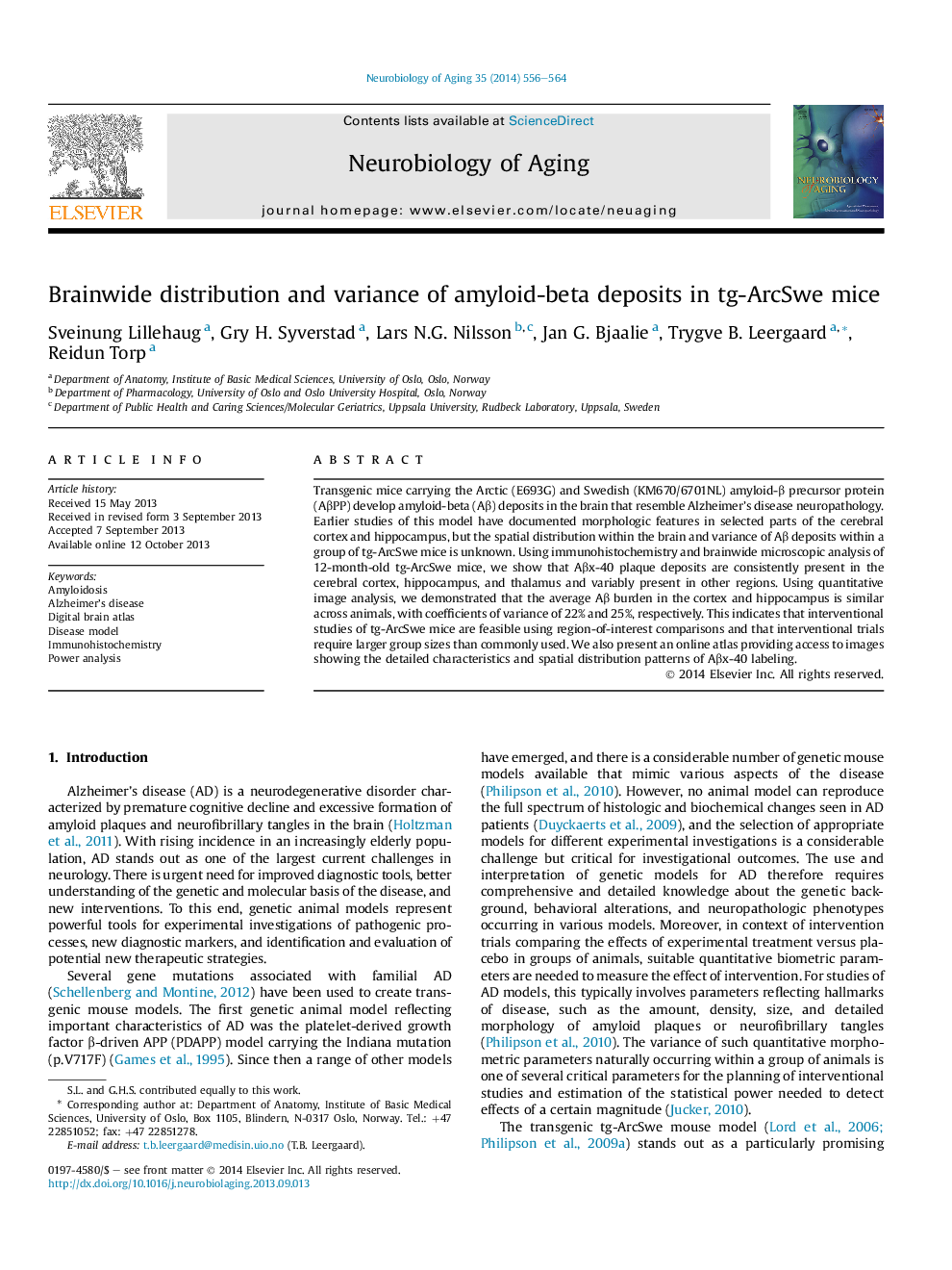| Article ID | Journal | Published Year | Pages | File Type |
|---|---|---|---|---|
| 6806237 | Neurobiology of Aging | 2014 | 9 Pages |
Abstract
Transgenic mice carrying the Arctic (E693G) and Swedish (KM670/6701NL) amyloid-β precursor protein (AβPP) develop amyloid-beta (Aβ) deposits in the brain that resemble Alzheimer's disease neuropathology. Earlier studies of this model have documented morphologic features in selected parts of the cerebral cortex and hippocampus, but the spatial distribution within the brain and variance of Aβ deposits within a group of tg-ArcSwe mice is unknown. Using immunohistochemistry and brainwide microscopic analysis of 12-month-old tg-ArcSwe mice, we show that Aβx-40 plaque deposits are consistently present in the cerebral cortex, hippocampus, and thalamus and variably present in other regions. Using quantitative image analysis, we demonstrated that the average Aβ burden in the cortex and hippocampus is similar across animals, with coefficients of variance of 22% and 25%, respectively. This indicates that interventional studies of tg-ArcSwe mice are feasible using region-of-interest comparisons and that interventional trials require larger group sizes than commonly used. We also present an online atlas providing access to images showing the detailed characteristics and spatial distribution patterns of Aβx-40 labeling.
Related Topics
Life Sciences
Biochemistry, Genetics and Molecular Biology
Ageing
Authors
Sveinung Lillehaug, Gry H. Syverstad, Lars N.G. Nilsson, Jan G. Bjaalie, Trygve B. Leergaard, Reidun Torp,
